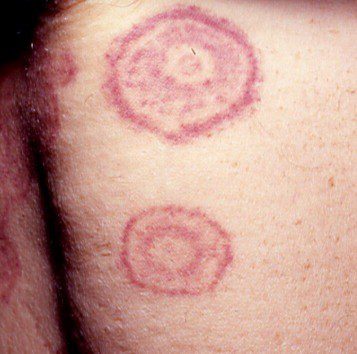Clinical Question-11
A 87-year-old man complained of a one-month history of a minimally pruritic rash on his abdomen, flanks, and buttocks.
His medical history revealed
- Smoker [35 pack-years]
- Chronic obstructive pulmonary disease
- Non–small-cell carcinoma of the left upper lobe that was resected more than five years earlier.
A presumptive diagnosis of tinea corporis was made and treated accordingly.
After three months Reviewed –
- showed no signs of improvement
- weight loss over three months
- “wood-grain” appearance of skin lesions seen
What is the diagnosis?

- Based on the patient’s history and physical examination, which of the following is the correct diagnosis?
A. Erythema annulare centrifugum
B. Mycosis fungoides (cutaneous T-cell lymphoma)
C. Erythema marginatum
D. Erythema gyratum repens
Erythema gyratum repens
- Erythema gyratum repens is considered to be highly specific as paraneoplastic syndrome
- Most common underlying neoplasms are from lung, breast, or esophagus
- Some cases of erythema gyratum rapens–like eruptions are associated with infection (tuberculosis), connective tissue disease (lupus, Sjogren syndrome), or are idiopathic, but most cases are associated with a solid organ malignancy.
- The most common neoplasm associated with erythema gyratum repens is lung carcinoma.





